#book repair
Text
This partial spine repair, done by our wonderful Preservation department, is so soothing to watch! The book is wrapped in a bandage at the end to further distribute the PVA glue and to apply gentle, even pressure as the glue dries.
2K notes
·
View notes
Text
Pulse of Life Press 1st Anniversary - and an experiment!
It's been a whole year since I started this crazy artform! I can't believe it myself. The amount of books I've made in the past year has long since hit the double digits, and each and every one of them is incredibly important to me, flaws and all.
However, there was one book - my first book - that had more issues than the others, some that outright interfered with reading. Luckily I've been learning book repair at the same time as binding, but when I tried to fix some of the problems for Bernhardiner, it went...well... about as badly as it could.
What to do, then, with a ruined book? I didn't have enough decorative paper to completely redo the cover, with all the little dogs. But then I thought - why not leave the cover? I know how books work - I could pretty easily detach the whole case from the ruined textblock, make a new textblock, and just reuse the old case. It seemed like a sound experiment. Now, for the press's first anniversary, I have compiled most of the process under the cut, complete with pictures.
Please come along with me on this journey!

This was the beginning of the process, after having slooowly and carefully detached the endpapers of the textblock (right) from the case itself (left). You might remember this from my recent shitpost! To loosen the adhesive and separate the two parts without ruining either one, I initially slid a bonefolder into the hinge area of the case, and then switched to a thin little boi called a microspatula to slip through the glue not unlike a letter opener.


This did lead to some wear and tear on the boards of course, but it could have gone a lot worse. Most binders that I've learned from use a homemade wheat paste to attach case to textblock, but so far I have not been able to make it without the ingredients turning into an Oobleck-esque gelatin. Thus I use PVA glue, which is far stronger, and can lead to things like this. Still, not too bad. The case was successfully salvaged!
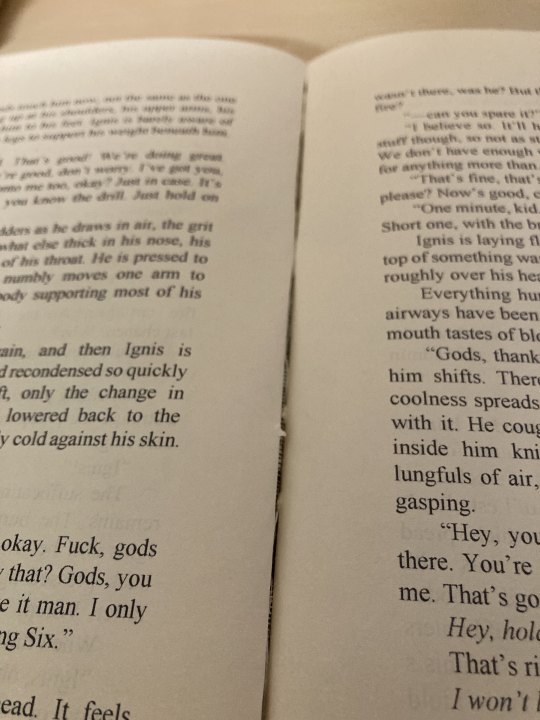

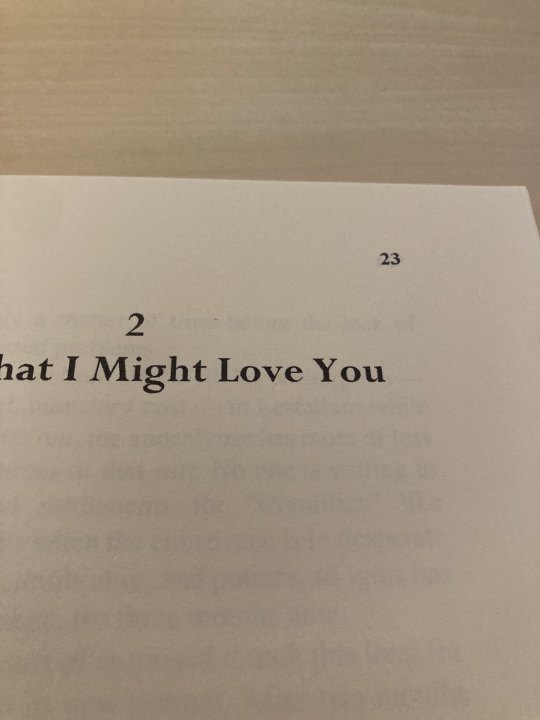
Before I describe and show off the redux, I just wanna share a couple of the errors and mistakes I made on the first textblock here, as I usually try and photograph my books with the least amount of flaws visible. Here we can see, firstly, that the glue job on the spine was shoddy at best; none of it really got quite between the individual signatures of the book, leading to weird gaps like that which compromise the stability of the book and show off the spine liner/mull, to my dismay.
In the other two pics you can see page numbers where they're definitely not supposed to be. Ah, MS Word, you son of a bitch and your terrible, terrible pagination settings. Took me months and months to learn how to paginate my books correctly, up until about my FINAGLC bind.
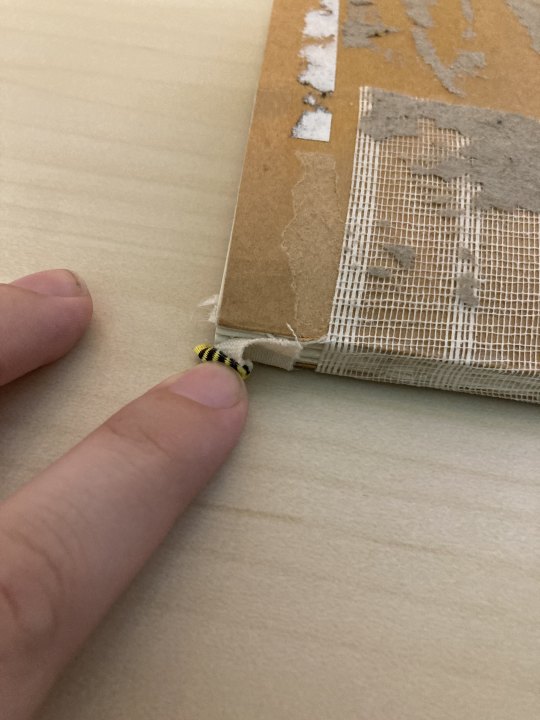
Not enough glue here on the pre-made endbands, either. It would sometimes fold under while reading, which wasn't super fun to see.

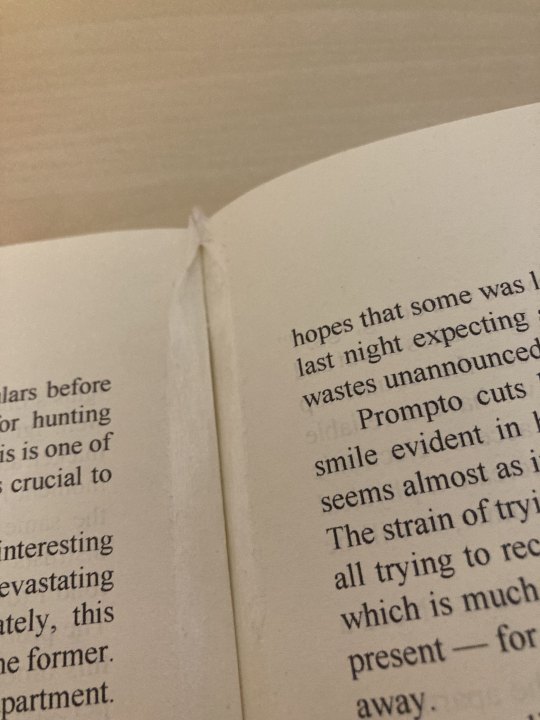
Finally, the botched repair that started this whole journey - I had attempted to fix one of the gaps between signatures (seen earlier) with some Japanese repair tissue, but ended up sticking these pages awkwardly together and fucked up that little top part there. A nightmare!
For all the above reasons, I actually decided to go back to my original typeset and revamp it. I've gotten some... teasing in my binding groups for the fact that my first few books were set in Times New Roman (which I actually find satisfying to read, thank you very much), which apparently gives off a sort of amateurish vibe. I've been experimenting with body fonts since, and the two I reliably use at the moment are usually Sylfaen (for shorter, smaller books) and Baskerville Old Face (for longer books). I switched it to Sylfaen here, and you can compare and contrast the results far down below.
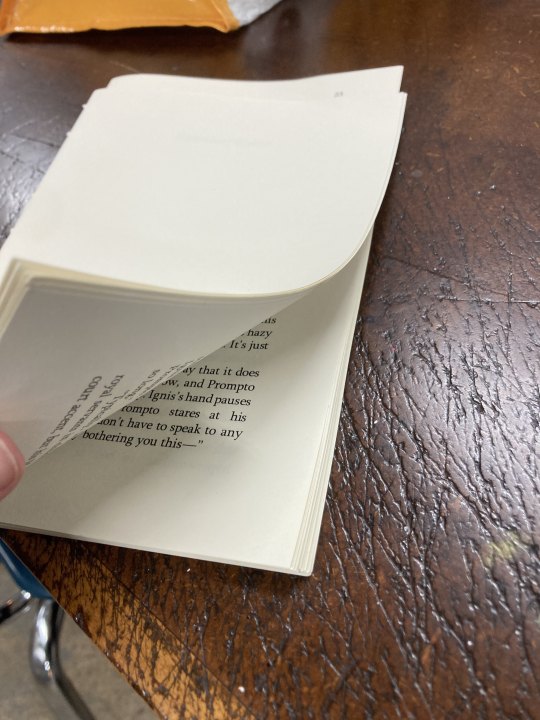

Now, I'm not going to detail the entire bookmaking process here - just the interesting bits. If you want to learn how to make books, I highly suggest checking out @renegadepublishing's resources, as they're how I learned. But here we can see all the new signatures of the new edition nice and crisp and printed. In the second photo they've even been punched for sewing already!
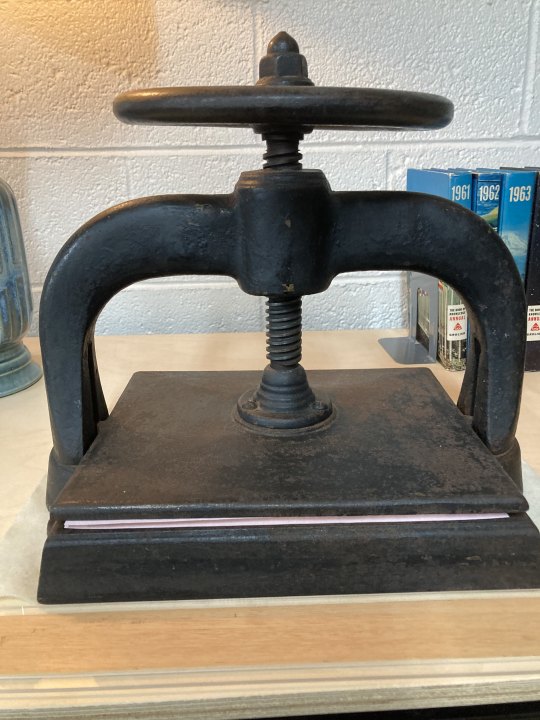
At the co-op where I print and sew my textblocks, I often get to use real nipping presses like this bad boy right here. It's entirely metal (iron?) and way too heavy to lift. Between the two scrap papers peeking out is the new Bernhardiner!
But at home, this is my current set up:

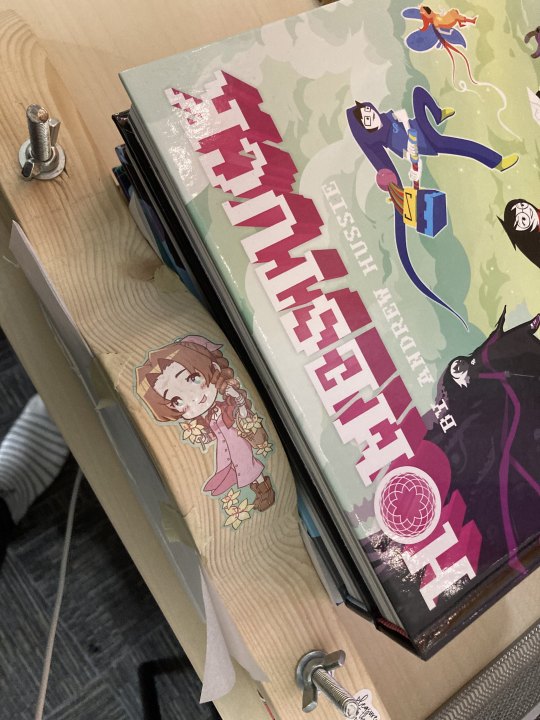
Everyone, meet the eponymous Pulse of Life Press. POL Press, meet everyone.
A family member of mine made the wood part (obviously, a separate piece from the HS books) for me last Christmas, with no real knowledge of what a book press should look like at all. It's sort of a cross between what's known as a lying/finishing press and just some sort of regular old clamp. I line it with wax paper, stick the spine of the book in the center, tighten, and then cover the rest of the textblock with my trusty viz Homestuck books. It's a little MacGyver-y, but it's served me well.
This is the part where you glue the spine, attach the endpapers, and so forth.
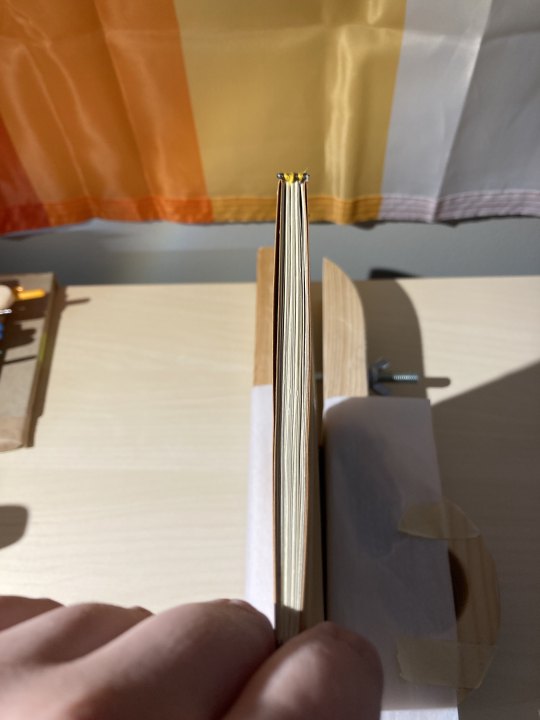
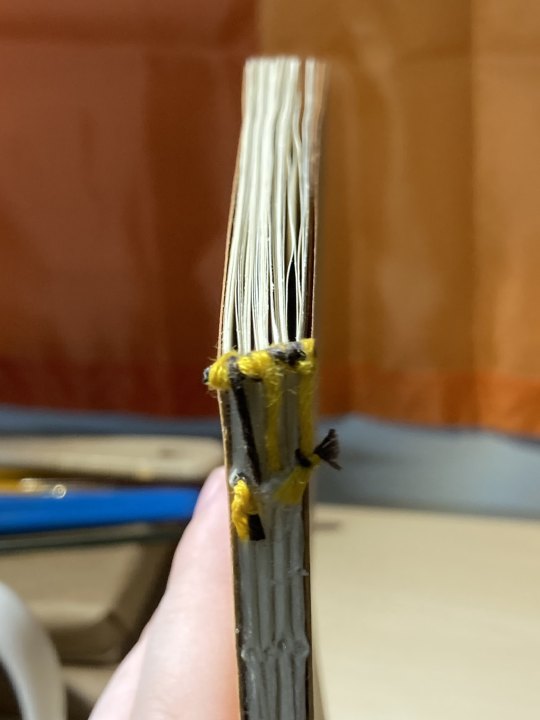



For this redux, I decided to continue practicing making my own endbands instead of using the same pre-made ones I had for the first copy. These ones actually came out pretty darn well, if I do say so myself! They're the absolute neatest I've made them so far, and that's a relief. Obviously I still need work, but it's so lovely making them. <3
After this, I actually don't have a lot of pictures! It's basically just press, attach the spine liner and glue again, press again, casing in, and then...

Et voila!

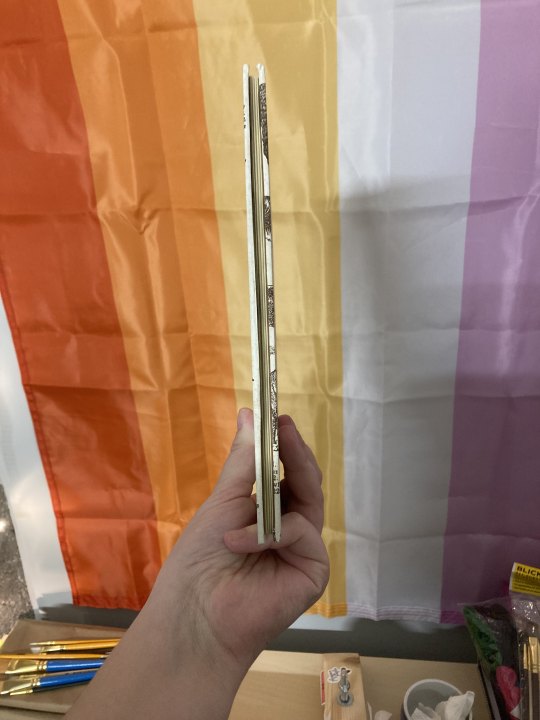
Lookin' pretty good, if I do say so myself.


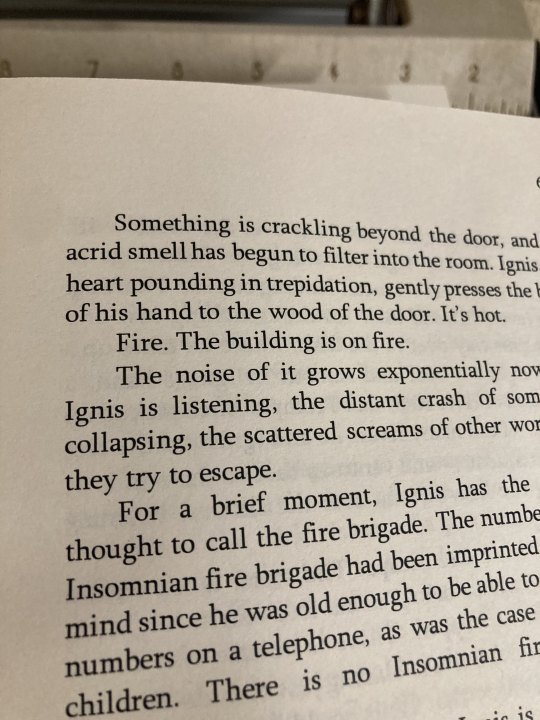
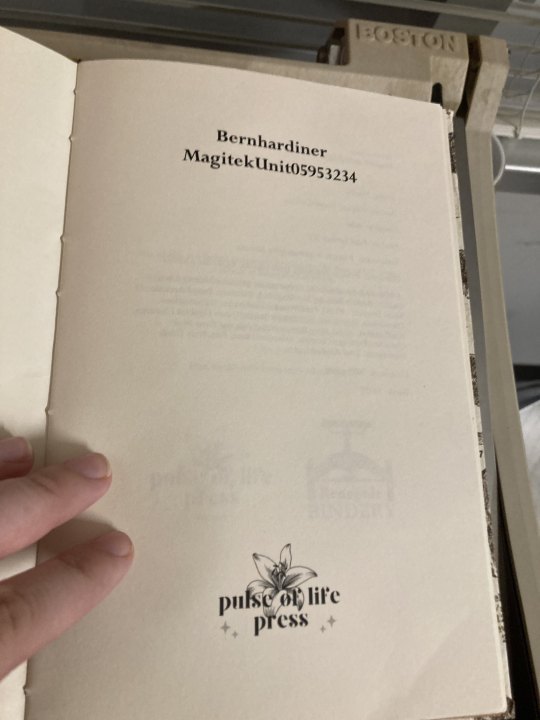

I didn't get exact duplicate photos of the original textblock's mistakes for a before/after, but you can probably just tell from these just how cleaned up the new one is. Rest assured those pesky out-of-place page numbers are long gone, and my spine gluing has gotten a lot better. I'm honestly just glad that it cased in so well - I was worried about that flaky board for a minute there!
And that's all. Thank you for coming with me on this little peek behind the scenes! Here's to many more books in the coming year - more to read, more to make, and more to write.
Cheers!

#cyborg rambles#POL press#bookbinding#fanbinding#book repair#it's also my birthday month so! double the warm and fuzzies#long post
36 notes
·
View notes
Text

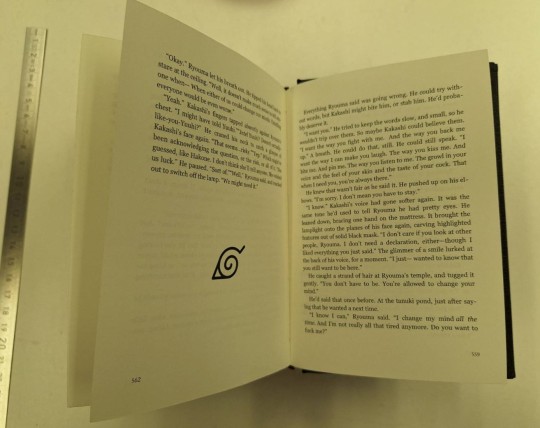
So, what happened was, I was rushing a step. Simply as that.
Printing was already weird, because for some reason printer simply decided to stop printing before the last 2 sections were printed. (There was paper and toner a plenty.)
I noticed as I was building sections/signatures (and after I had to literally had to fold back EACH sheet because I somehow had folded them all the wrong way, but it was fine, no harm done. Easy fix.)
I took extra care to fold the last sections correctly, got to sewing, finished the book and only on reading noticed... the very last section was folded the wrong way.
All present and accounted for, but each sheet was out of order which made reading a hustle.
Luckily this is an easy fix.
I printed the last section again. Folded and cut in half so I had single sheets
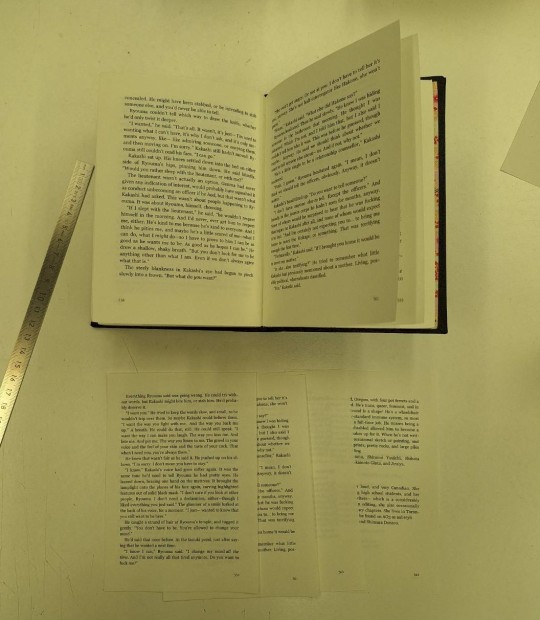
In the next step, I cut out the pages in the wrong order and left over a small ledge, about 3-4mm. I used the cut out pages to adjust my book height. (I trim my books so the newly printed sheets were not the same height anymore as the trimmed book block).


I applied a small strip of glue on the freshly printed sheet that was next in order and pushed it under the first small ledge.
(A piece of paper helps with getting a clean line and really just gluing a small strip without too much glue on it.)
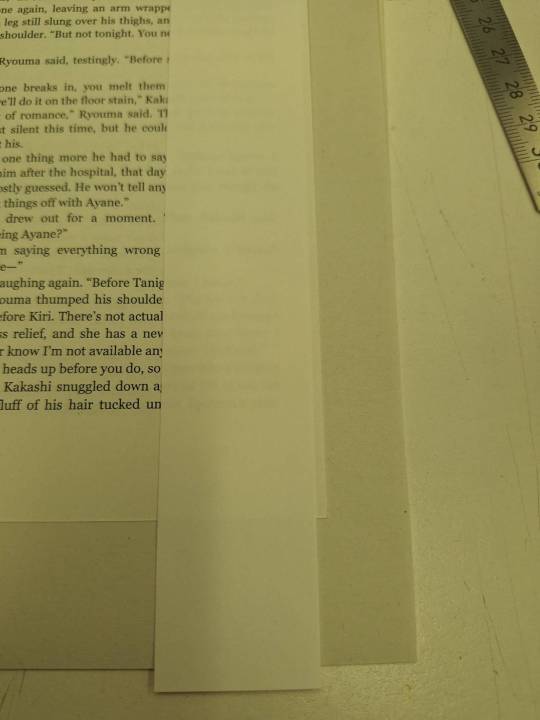
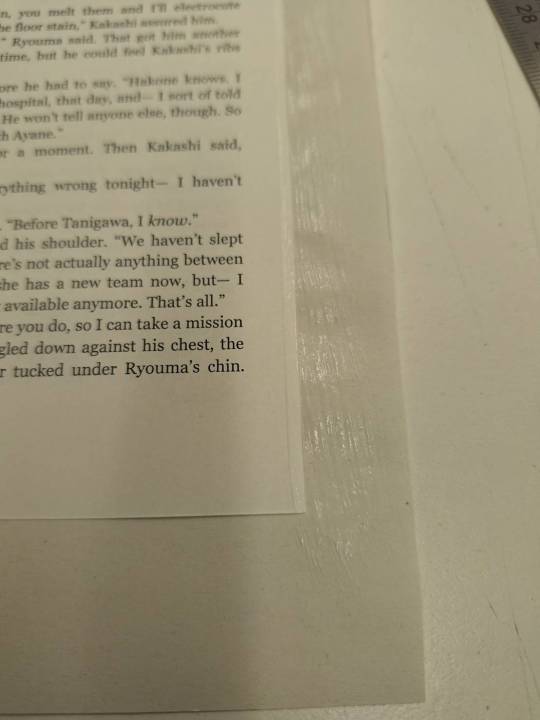
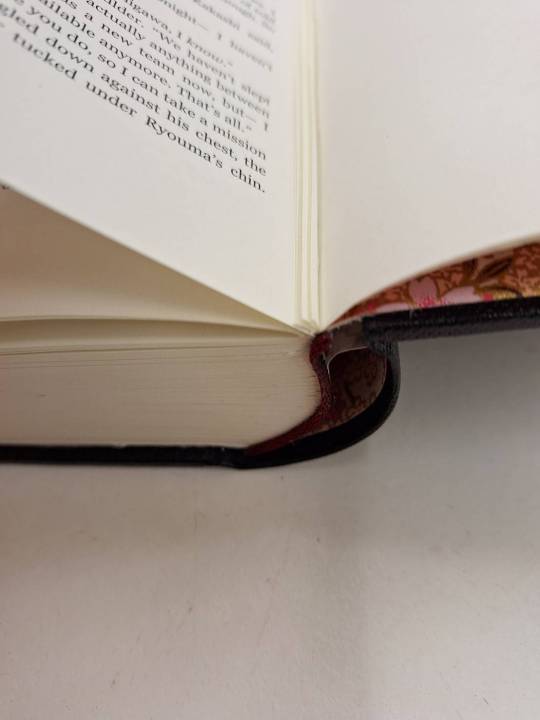
I did the same with each new sheet and pushed it under the next empty ledge until they were all glued in. Now in correct order.
Last I put some blotting paper and something (it's silicon paper, I use silicon paper for that, but really, a sheet of plastic sheet protector does the job just the same) to prevent any possible excess glue from gluing the papers to each other instead of just the ledge and let that dry between boards and with a weight on top
Last I trimmed the front edge again so the added sheets were the same length as the ones in the book block.
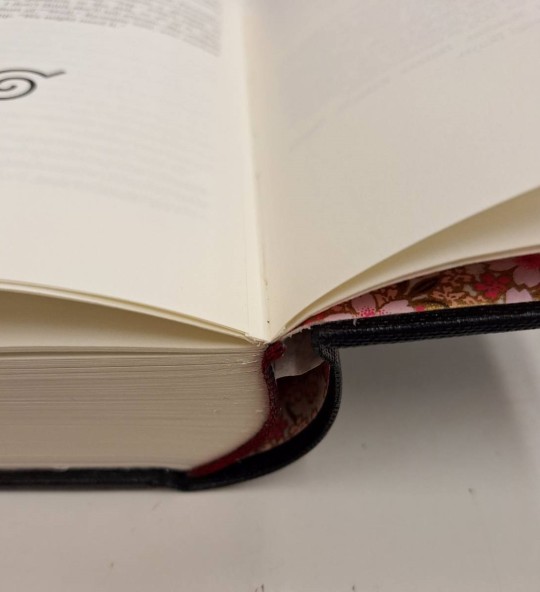
(Oh, and have a peek at this too narrow oxford hollow that got pulled loose.)
#bookbinding#book repair#replacing single pages in a finished book#I folded and sewed the last section wrong and didn't notice -_-#oxford hollow is too narrow too#nothing to be done about that though
26 notes
·
View notes
Text
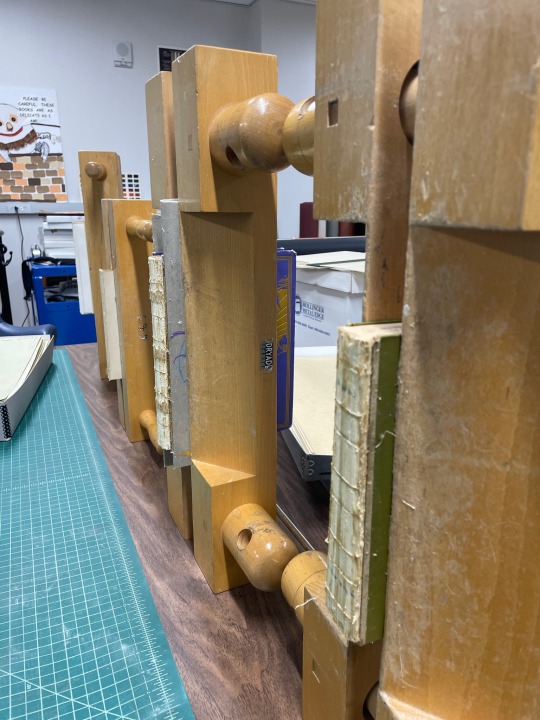

My students have created a book henge in the conservation lab it seems
64 notes
·
View notes
Text



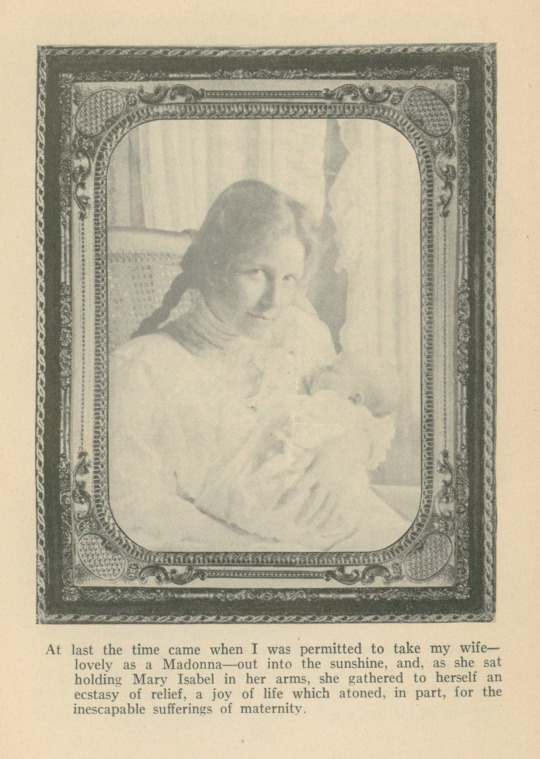

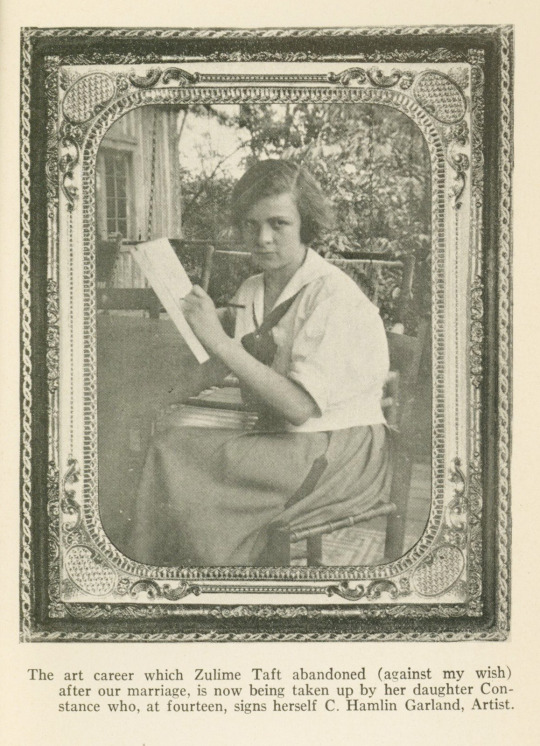


Publishers' Binding Thursday
This Publishers' Binding Thursday we've got a lovely Midwestern book to share. It is A Daughter of the Middle Border by Wisconsin poet, novelist, and short story writer Hamlin Garland. The book is the sequel to Garland's autobiography A Son of the Middle Border and continues his story as he sets out for Chicago and settles into a Bohemian encampment of artists and writers where he meets his wife, the artist Zulime Taft. A Daughter of the Middle Border won the 1922 Pulitzer Prize for biography or autobiography.
The binding features a scene of a covered wagon at sunset, pulled by what appear to be horses. There is also an ox following the wagon. The title and author's name are printed in red and there is a red border around the front cover. As you can see in the first image shown here, our copy has some damage to the spine that I will be mending with methyl cellulose. We use methyl cellulose for many small in-house repairs needed for things like loose spines because it is stable, non-acidic, and water soluble.
View more Publishers' Binding Thursday posts.
-- Alice, Special Collections Department Manager
#Publishers' Binding Thursday#publishers' bindings#A Daughter of the Middle Border#Hamlin Garland#Pulitzer Prize#methyl cellulose#Zulime Taft Garland#Zulime Taft#book repair#spine damage#autobiography#Alice
34 notes
·
View notes
Text

interesting markings from the spine lining of a book I removed
#never seen anything like this before#the pigment is somewhat loose but very blue#book repair#conservation#library#archive
35 notes
·
View notes
Text
So last week I bought a paperback copy of Interview with the Vampire, and it was one of those massively produced versions I guess. It was cheap and it was cheaply made. 2 days into reading it pages literally started just falling out of it, and it's just loose leaf pages.
SO this gave me the excuse to FINALLY try my hand at book binding in order to repair it.
It's not perfect, it's a little wonky, but for my first attempt I think it's alright- and more importantly it's functional. So as long as it doesn't start falling apart on me again I think we're good.




#book binding#book rebinding#book repair#interview with the vampire book#interview with the vampire#iwtv#louis de pointe du lac#lestat de lioncourt#the vampire armand#arts and crafts#trying something new#first try#books
29 notes
·
View notes
Text


While working on a book repair from 1888 today I came across the most charming Clover border ☺️
14 notes
·
View notes
Text
my dudes, i am so happy rn i just started working on repairs for my 1880's "Flora Orientalis" (language mixed in French, German, and Latin) and ohmygod it's beautiful


Like, I get to help fix this!! I get to help this book!!
Currently, it's in 4 pieces:
solid textblock (all one piece thank GOD)
back cover, severed
front cover, severed
half of the spine (the previous owner decided to put PACKING TAPE over the ENTIRE spine to hold it together. Needless to say, that did Not work)
My friend let me take some nice leather that I'll see if I can work with, since it's very thick and so unfortunately strong that neither of my boxcutters or my X-Acto blade can bevel the edges.
#bookbinding#antique books#old books#book repair#antique#1800s#19th century#french literature#floral guide#1880s#latin
8 notes
·
View notes
Text

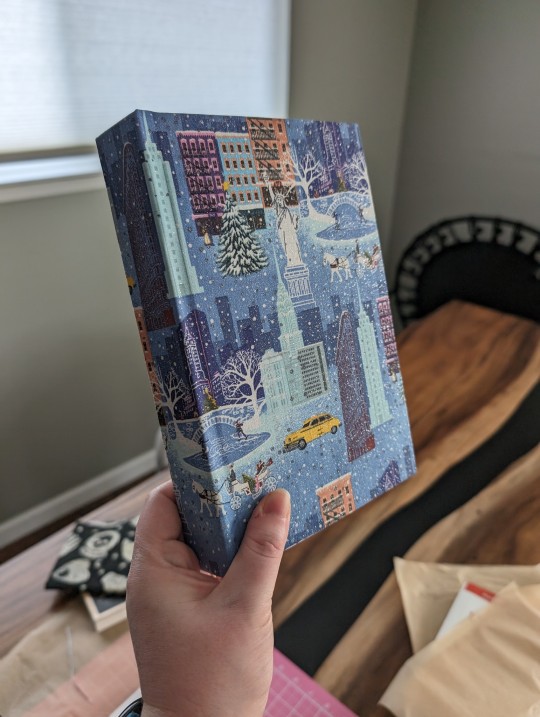
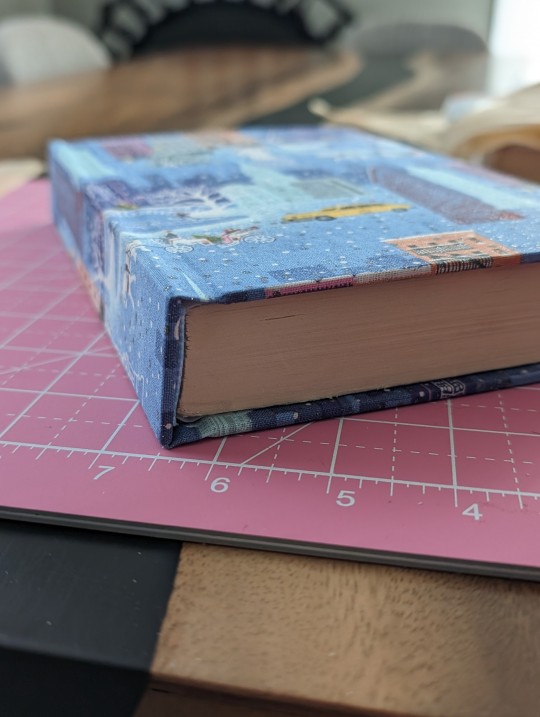

Did another lil book re-binding project, this time for a thrifted paperback copy of Book Lovers by Emily Henry!
I couldn't find a perfect fabric for it locally but I do think this one has a lovely vibe and part of the book (including one of the dramatic scenes) does take place in NYC so I went with this winter in New York pattern and I like it!
10 notes
·
View notes
Text
youtube
Enjoy a step-by-step video showing how we create custom book box housings for the more fragile books in our collections!
#libraries#books#librarians#archives#old books#vellum#book box#booklr#preservation#book preservation#book repair#Youtube
20 notes
·
View notes
Text





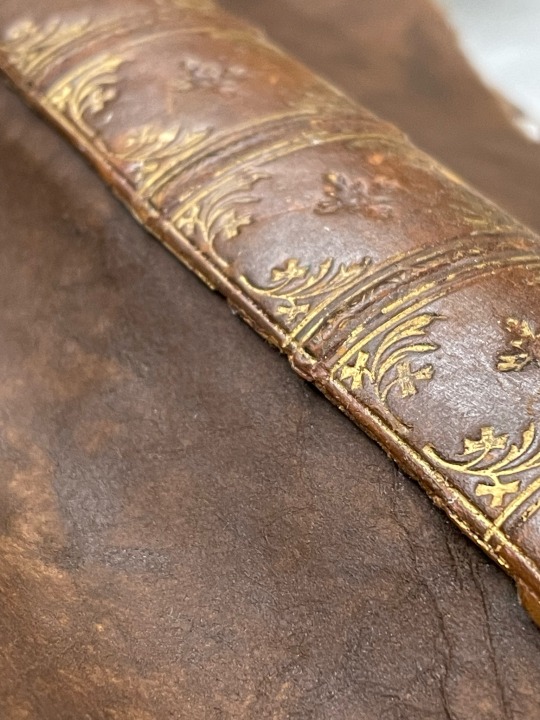
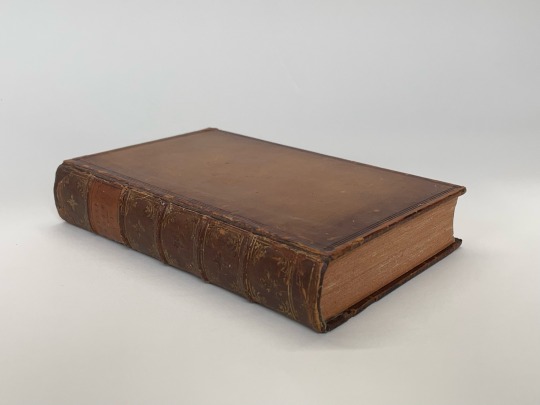
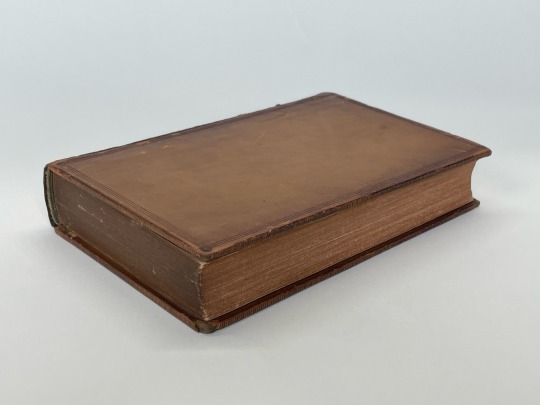

tissue hinge repair on The Poetical Works of Percy Bysshe Shelley Vol. 1, published in 1853
#bookbinding#book repair#book conservation#percy shelley#books#board reattachment#idk who’s gonna be searching tumblr for board reattachment posts but whatever it’s relevant#my repairs
45 notes
·
View notes
Text
A collection of resources for book repair
Various resources I've seen shared among library/archives workers. This is not my area of practice so I do not have personal experience.
Indiana University Libraries: Book Repair Manual, including both "repair treatments" and "enclosure treatments" along with a list of tools and a glossary.
Dartmouth Library: Preservation Services' A Simple Book Repair Manual.
Syracuse University Library's Department of Preservation and Conservation: @SULPreservation Youtube channel how-to videos.
Demco playlists (@DEMCOinc on Youtube) including many for different types of repairs; Demco also sells materials, and has many of their videos listed on their repair supplies section of their website.
KAPCO's Youtube videos (@Kapcokent3420) for repairs; KAPCO also sells materials.
Book Repair Basics for Libraries, PDF from presentation by Peter D. Verheyen and Marianne Hanley of Syracuse University. Includes some links to recommended websites and videos. (Some links are broken and require googling to find their current URL.)
Northeast Document Conservation Center's Preservation Leaflet series of searchable preservation topics.
Randy Silverman/The American Institute for Conservation: Small, Not Insignificant: a Specification for a Conservation Pamphlet Binding Structure
DAS Bookbinding on Youtube: Single Section Conservation Pamphlet, using techniques described in Randy Silverman's article.
Alaska State Library's Conservation Book Repair: A Training Manual by Artemis BonaDona, which on page 134 includes a list of things to consider that can help you decide whether to repair and what to repair.
10 notes
·
View notes
Text
A little book repair and a box for first edition of czech tranlastion of Steppenwolf by Hermann Hesse (published in 1931).
(pictures of process below)
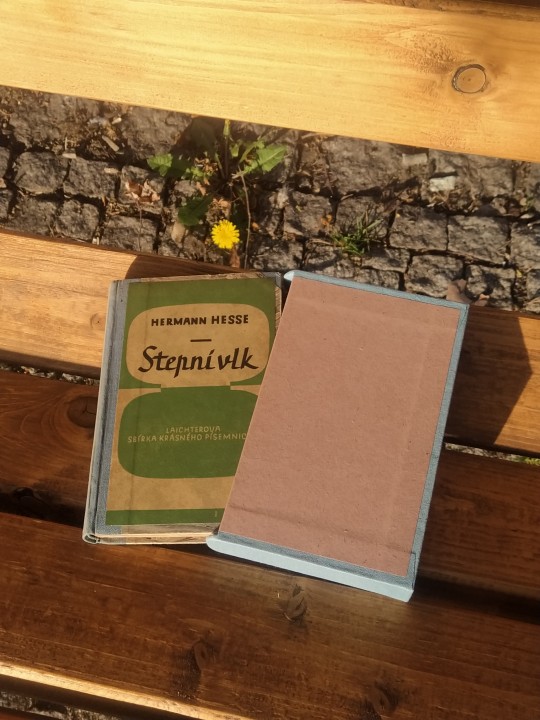
The book has been rebound before and held together pretty well. So I just replaced spine of covers (the old one was in terrible shape), added endbands and reinforced the spine of text block. Also because of removal of covers during process I had to replace endpapers. The paper used on covers in original rebinding was torn at some places, so I just glued it back to place and left it as it is becasue I think old books should look old. I only did what I deemed necessary to make the book last another few decades. Because of that I created box with round upper and lower front edges to keep it safe.
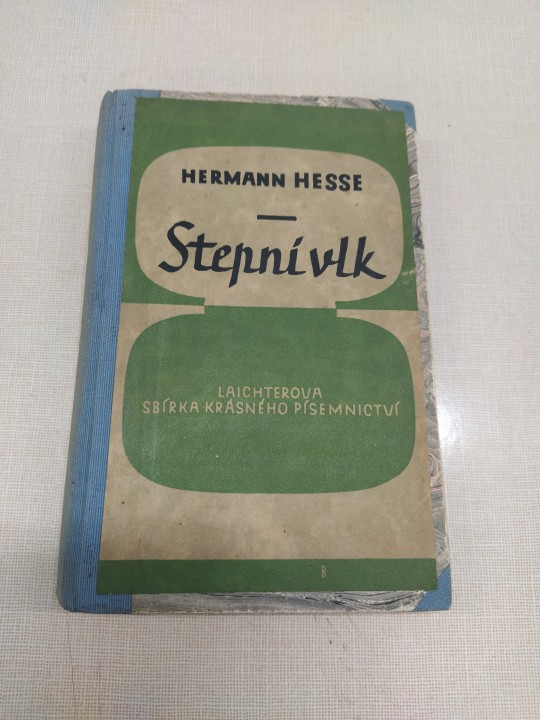

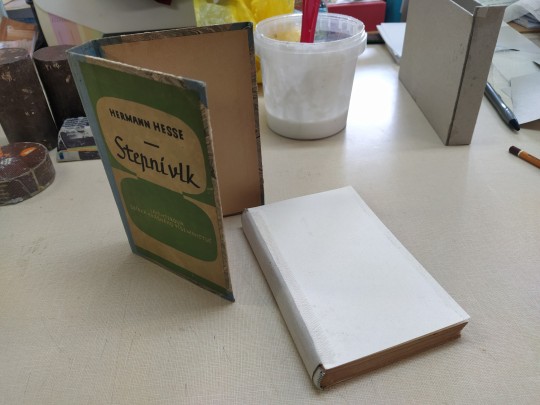
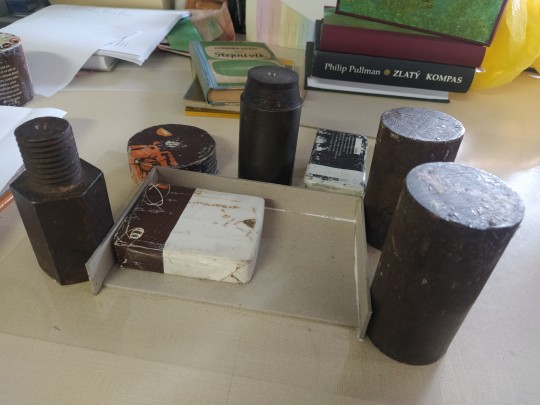

15 notes
·
View notes
Text
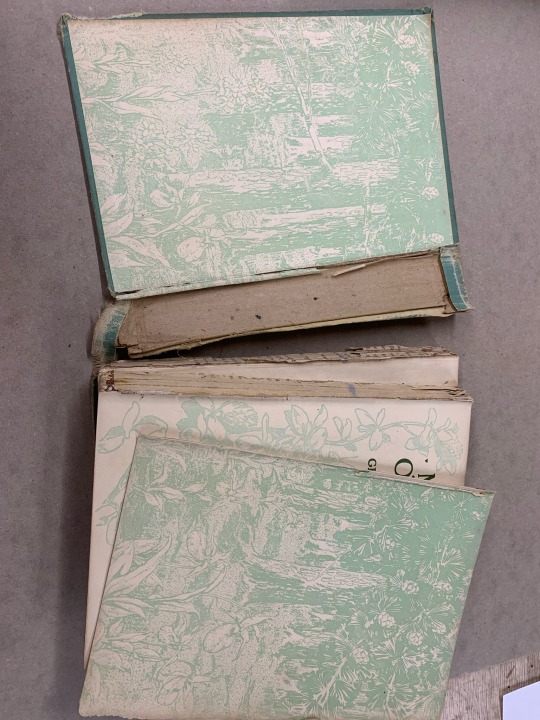
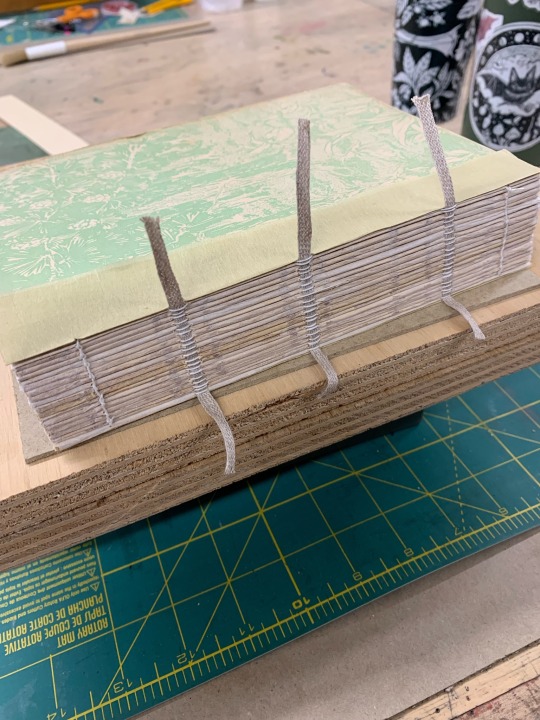



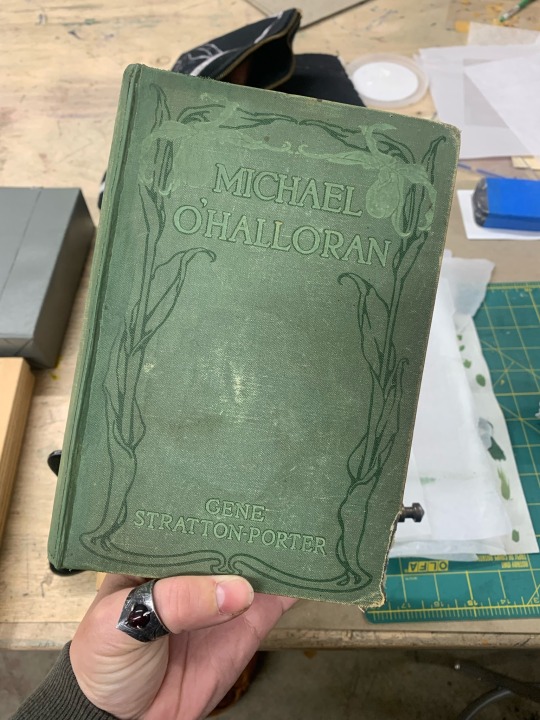

From a recent book conservation course. First time doing this type of work and color matching!
38 notes
·
View notes
Text

hey book conservators out there - what's the best way to repair the dust cover (aka book jacket apparently) tear that you can see on the left? we used to work in a museum so we at least know not to use sticky tape of any kind, but we're at a loss as to the best way to preserve this
we just got this book in the post - note the illustrator Pauline Baynes who did the original artwork for the Narnia books and is the reason why we bought this book, though we will read it as well as share some of the pictures here
5 notes
·
View notes